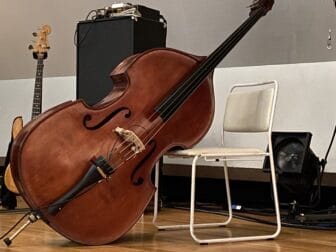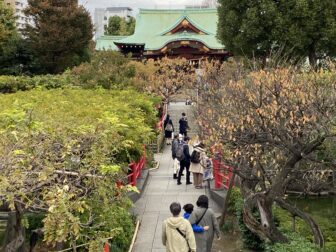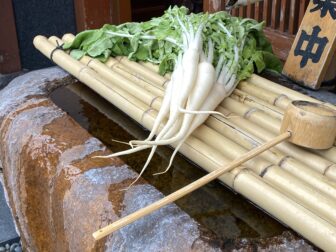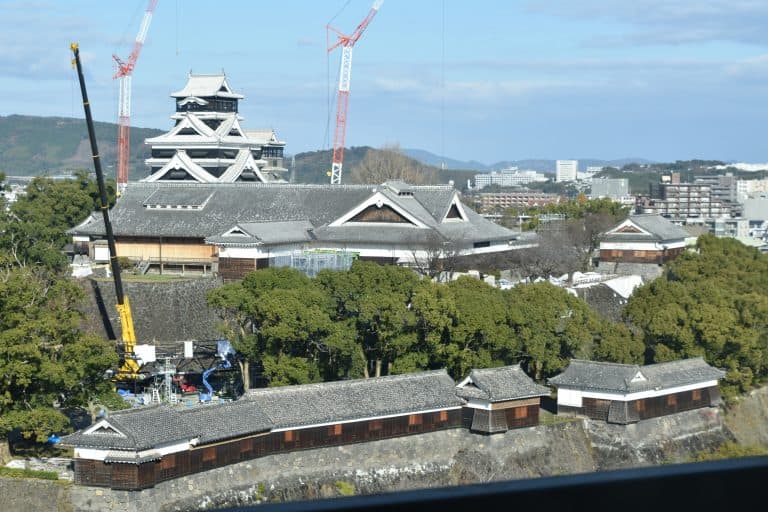
[ Dec.2019 ] On the second day in Kumamoto City in Japan, the weather was fine.
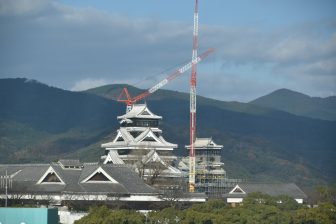
But the air was to cold to keep walking outside, so we decided to go into the building of the City Hall to see the Kumamoto Castle from the 14th floor.
We could see the castle in the distance from our room in the hotel, too, but later a local person told us that the City Hall was the best place to look at the castle, so it was a good choice.
Kumamoto Castle was in the middle of the restoration work, so we could not get into the site anyway.
It was badly damaged by the earthquake in 2016.
The third of the stone wall was collapsed and most of the roof tiles of the top of the castle tower have fallen down.
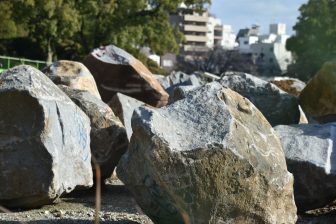
We saw some cranes standing around the castle buildings and there was a vacant lot where the rocks of the wall were gathered.
Apparently, they show some parts of the castle being restored on Sundays and holidays to the public, but when we were there was Friday.
We had known that we could not enter the site, but what I did not know was that the main tower of the castle had been restored only in 1960.
Apparently this castle has suffered from many disasters in its history and the worst one was the fire just before the Satsuma Rebellion in 1877.
Let’s get back to the beginning.
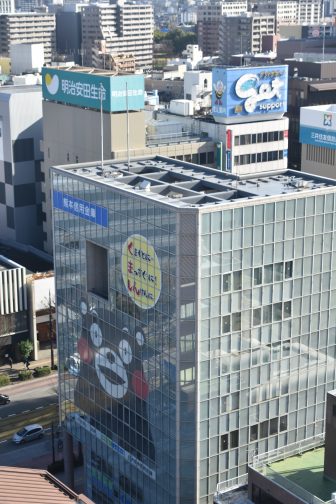
This castle was originally built by the feudal lord called Kiyomasa Kato in 1606.
Apparently Kiyomasa Kato had a talent for engineering.
Especially the way they piled up the rocks for the wall was very well thought.
This curved stone wall is called Musha-Gaeshi.
Not only the recent earthquake, but any other earthquakes broke most of the walls but the earliest parts were damaged less.
And because of this Musha-Gaeshi, they could hold the castle against the attacks by 14000 soldiers of Saigo’s army during the Satsuma Rebellion.
But Kato family did not last long, only two generations kept the castle and after Kato, Hosokawa family ruled Kumamoto in Edo period and they developed the castle further.
From the 14th floor of the City Hall, we could see the big Kumamon on the wall of the building of Kumamoto Shinkin Bank (a credit association).
Kumamon is the mascot to promote Kumamoto prefecture.
There was a period that many regions in Japan made some promotional mascots and among them, this Kumamon was one of the most successful ones.

Apparently it is 10 years old in 2020.
By the way, on the way to the City Hall, we saw a statue of Otemoyan in top of a post box.
Otemoyan is a popular Japanese folk song as well as a woman’s name and the words of the song are in Kumamoto dialect.
The words and music were written by a woman called Ine Nagata who was a professional Shamisen (three-stringed Japanese instrument) player and a dancer.
There was an actual woman who was the model for this song and her name was Chimo Tominaga.
The contents is interesting, especially at the beginning, which roughly means : Otemoyan, I heard that you got married recently, is that true? Yes, I did, but because the groom was so ugly that we did not have a wedding party. I do not know, but the matchmakers in the village will take care of it, I suppose.
This apathetic attitude made me laugh.

